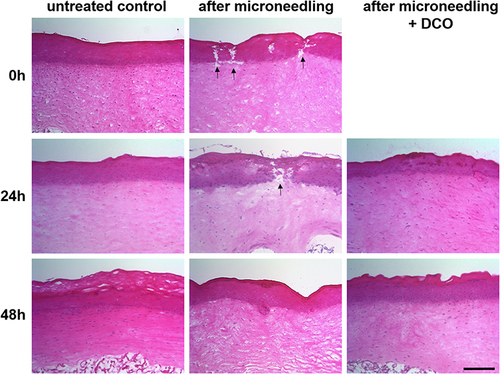Figures & data
Figure 1 Histological analysis of micro-needling-treated 3D skin models. Upper row shows hematoxylin and eosin stainings of untreated controls and skin models immediately after micro-needling treatment (0 h). The middle row shows untreated controls, micro-needling-treated models, and models that were additionally post-treated with DCO, 24 h after treatment. The bottom row shows the corresponding models 48 h after treatment. Shown are representative images from four independent experiments. h = hours. Scale bar: 200 µm. The black arrows indicate the lesions.

Figure 2 Gene expression profiling in micro-needling-treated 3D skin models. Microarray analysis in models 24 h after (a) micro-needling treatment in comparison to untreated controls, (b) micro-needling treatment and additional post-treatment with a dexpanthenol-containing ointment (DCO) in comparison to untreated controls, and (c) micro-needling treatment and additional post-treatment with DCO compared to micro-needling-treated models without post-treatment.


